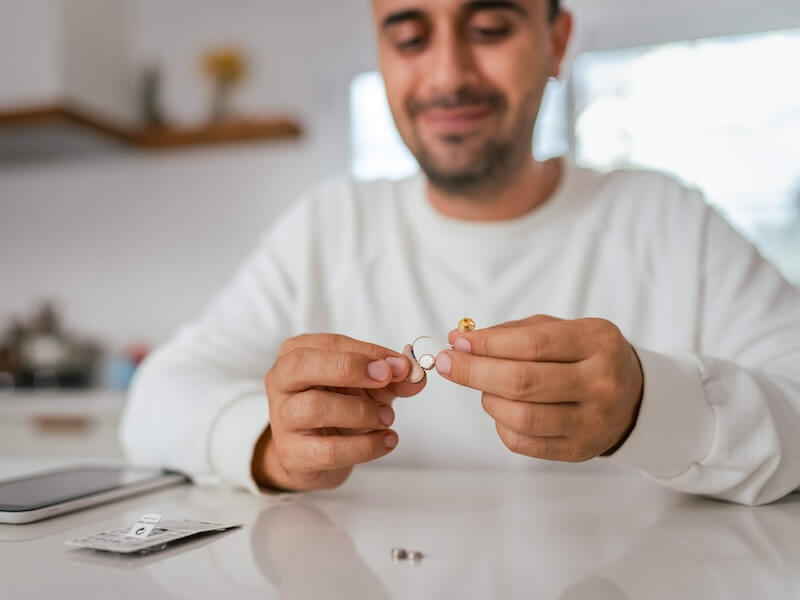The cause of tinnitus, a persistent ringing or buzzing in the ears, has long baffled scientists. However, there is one thing that all hearing specialists agree on: you are more likely to experience tinnitus if you also suffer from hearing loss.
As you probably know, your age, genetics, and lifestyle can all play a role in the development of hearing loss. And while many of us think of hearing loss as being obvious, the reality is that some mild hearing loss can go unnoticed. Worse, even a minor case of hearing loss increases your risk and likelihood of developing tinnitus.
It’s not a cure, but hearing aids can help treat tinnitus
There is no cure for tinnitus. However, hearing aids can treat both hearing loss and tinnitus in ways that can reduce symptoms and improve one’s quality of life. In fact, the similarities between hearing loss and tinnitus are rather remarkable.
The pitch or frequency of ringing one hears when dealing with tinnitus is typically in sync with the type of hearing loss that person encounters. For instance, someone who hears high-pitched ringing from tinnitus might suffer from high-frequency hearing loss. Some people believe this parallel to be a consequence of the brain trying to compensate for a lack of acoustic stimulation at that level by producing a similarly pitched tone of its own.
A traditional hearing aid can essentially hide the ringing or buzzing associated with tinnitus by replacing it with what they’re supposed to hear. The good news is that there are other, more advanced options beyond just traditional hearing aids to treat the symptoms associated with tinnitus.
Types of specialized hearing aids to reduce tinnitus symptoms
Hearing aids work by gathering natural sounds from the environment around you and amplifying them to a level that allows you to hear. Even though it may be simple in design, that amplification of noise—be it the hum of a dinner party or the rattle of a ceiling fan—is critical in training your brain to receive certain stimulations again.
But you can augment those amplification efforts by the combination of other methods like counseling, sound stimulation, and stress reduction for a more comprehensive approach to treatment.
Some manufacturers even use the irregular rhythm of fractal tones to reduce the symptoms of tinnitus. These rhythmically inconsistent tones can detract from the consistent and regular tones tinnitus sufferers hear. While white noise devices are available, the most common fractal tones are similar to wind chimes that supply a pleasant sound that drown out the ringing.
Other specialized devices try to blend your tinnitus in with the natural sounds you’re hearing. This approach will generally use a white noise signal that a hearing specialist can adjust to ensure proper calibration for your ear and your condition.
Whether it’s through sound therapy, blending or a white noise mechanism, each of these specialized devices has a common goal of distracting the user away from the ringing or buzzing of tinnitus.
It’s true that there is no cure for tinnitus, but for at least some of the 50 million suffering from the condition, hearing aids present an attractive possibility to reduce symptoms and live a better quality of life.
Have more questions about tinnitus?
If you’re struggling with ringing or buzzing in the ears, check out our tinnitus section for more information on ways to reduce symptoms.
